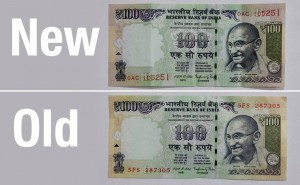Grey Markets also called parallel imports refers to technically the trade of commodities (non-counterfeit) through legal distribution channels though unauthorized, unsanctioned and not anticipated by the original manufacturer. However, these goods may be used, mislabeled or completely counterfeited. These are often electronics bought from a country where it is widely available at cheap rates (often retail-sometimes wholesale) such as China and are legally imported into the target country where it is sold at higher prices.
In 1984, 10% of the computer sales by IBM were through grey markets. The ‘buyers’ bought these computers in bulk, receiving a substantial discount and then re-sold them to unlicensed dealers. An example of the functioning of a grey economy can be described as- dealers import and re-sell Apple products in South Korea where Apple doesn’t presently have outlets. The trading of crude oil and IPO are also good examples.
There are two main types of Grey Markets:-
- For goods that are not available/expensive in the home country
- For goods that are not yet legally traded in the home country’s market.
They arise due to multiple reasons some of which are- weak links in the supply chain management, suppliers pricing policies, international exchange rate fluctuations, high tax rates etc. Branded product markets with their high tax burden find it difficult to compete with the smuggled products.
Presently, India is filled with grey market products right from mobile handsets to high end consumer durables. The grey market consumer goods are growing at rate of 25-30%. They account for over 50% of the domestic market of branded electronic products like digital cameras and gaming consoles. A new FICCI study shows that the loss to the manufacturing sector has increased by 44.4% (Rs. 72,969 crore to Rs. 1, 05,381 crore) from FY12 to FY14.
There is a dire need to curb illicit markets as it hinders two of the country’s main goals-
- Stimulating the country’s manufacturing sector (Make in India)
- Checking the generation of black money
The grey market not only weakens the economy in terms of violating intellectual property rights but also opposes research and development. This discourages investors, curtailing India’s investment potential. India must take steps on stringent quality control, reinforcing its IPR regime and looking into taxation policies.





21 Comments. Leave new
Informative article.
Nice work…i agree with ur point of view….is gaffar market in delhi an example of grey market ?
Very well written!
Nice one!
Interesting topic..:)
and Vinny ..I also thinks that gaffar market in Delhi can be an example of grey market..
very informative post..
Different topic and nicely written.
Very well written!!
Well written
Thanks Guys!
And yes, the Gaffar market is one example.
Nice article honey.
very informative and well written
Well written..
very informative article….well written!
‘
Very well explained! Also the past lessons gives us a much clear view about its trend. One aspect is that Grey market is very closely related to economic business cycle so whenever there is a downturn in economy and is accompanied by low unemployment,lower disposable income etc ,than more individuals get involved in this shadow market to improve their personal finance.so, if at individual level poor is getting benefited in this situation than who cares who are the losers!!! Second aspect is ‘SAVING ‘its very difficult to eradicate this economy completely as it is totally based on cash transactions which can not be traced out.most of the work in the economy is ‘ not registered’ in legal books because they want to save bit more from cutting down on taxes and state regulations.lastly, blog well defines how this market is threat to actual manufacturers and branding.for instance India’s post liberalisation there was a huge capture of Chinese products in domestic market because of their cheap price and duplication.;such markets are more prevalent in developing countries.so there is no clear yes or no whether it’s right to have this market or not.
Kanika thanks for you inputs!
Nice one
Keep it up, Elesha!
the article is structured very well and very well written !
yes, i agree with the fact that Grey Market weakens the economy !
good one !
We need to scrap this up as soon as possible it stifled the growth of the economy, great article, great efforts, commendable job
Interesting read